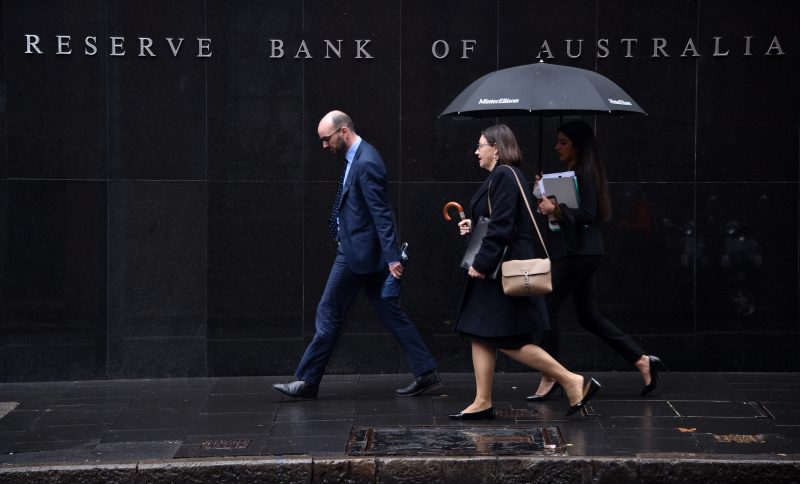Australia cuts rates to historic low as economy slows
Australia dodged much of the global economic tumult of the past two decades but rising unemployment, low wages and a housing slump are stoking fears about the health of the economy (PETER PARKS)
Sydney (AFP) – Australia’s central bank lowered the cost of borrowing for the first time in three years on Tuesday, hoping to extend a record 28-year-run without a recession in the face of stiffening economic headwinds.
The Reserve Bank of Australia cut rates by 25 basis points to a historic low of 1.25 percent as the pace of growth slowed to levels not seen since the global financial crisis.
Australia dodged much of the global economic tumult of the past two decades as Beijing lapped up its vast iron ore, coal and other mineral deposits.
But now rising unemployment, low wages, a housing slump and below-target inflation are stoking fears about the health of the economy Down Under.
“The Board took this decision to support employment growth and provide greater confidence that inflation will be consistent with the medium-term target,” governor Philip Lowe said in a statement.
The rate cut had been expected and analysts believe that more measures to juice the economy could be on the way.
Lowe said the bank would “continue to monitor developments in the labour market closely and adjust monetary policy to support sustainable growth in the economy”.
The economy grew at 0.3 and 0.2 percent in the last two quarters while figures for the first quarter of 2019 will be released on Wednesday.
Any contraction would trigger alarm with negative growth for two consecutive quarters widely considered a recession.
– ‘Downside risks’ –
Many are predicting the cash rate will fall below 1.0 percent this year and the central bank could even look at buying up securities.
In the 10 years since the global meltdown, the Reserve Bank of Australia has — apart from a brief burst of optimism in 2010 — steadily cut rates from a peak of 7.25 percent.
Any hope of returning rates to more “normal” pre-crisis levels have been quashed by the slow global recovery, trade disputes between China and the United States and domestic challenges.
Lowe said that while the global outlook appears “reasonable”, the “downside risks stemming from the trade disputes have increased”.
Earlier on Tuesday there was news of faltering retail sales and the country’s main telecoms firm cutting 10,000 contractors.
A downturn in the country’s hypercharged housing market, falling consumption and stalled wages have already pushed Australia into a per capita recession, with the output per person falling for two consecutive quarters.
Treasurer Josh Frydenberg urged lenders to pass on the lower cost of borrowing to customers and criticised one lender for announcing it would pass on only an 18 basis-point cut.
The decision to cut rates takes the central bank further into uncharted territory.
Lowe has himself warned that “low-for-long” interest rates could pose problems for financial stability, with banks and other firms overvaluing risky assets.
But already there is talk about the bank going a step further in improving liquidity, by buying up securities — known as quantitative easing.
National Australia Bank analysts predicted another cut in August and further possible cuts in 2020.
“It’s quite possible that the government will begin to contemplate some further fiscal support as well later in the year if current trends continue,” they said.
Disclaimer: Validity of the above story is for 7 Days from original date of publishing. Source: AFP.


